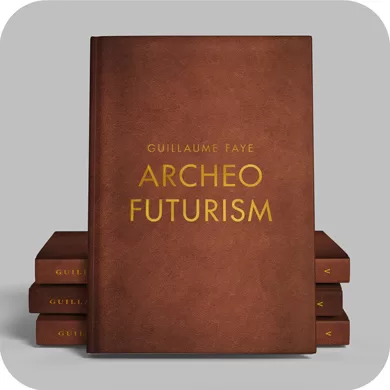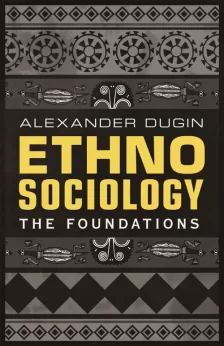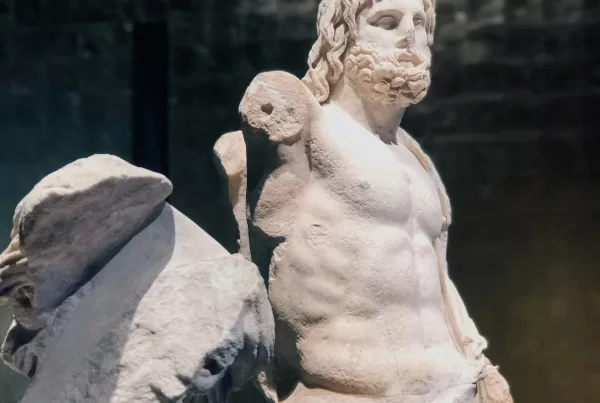The word “modern” is an eternal word. Eternity is the infinite continuity of the present. If we look at each moment one at a time, they become the present age, and if we look at them together, one after the other, they become eternity. And as this modern world becomes eternal, there is a kind of transformation or reincarnation. I have been thinking about this boundary for some time now. This state of transition is like a whirlpool in the midst of a fierce current. As it turns around and around, the present age will disappear for a time and a new age will begin. And the waves of time endlessly repeat this process.
The view of life and the view of the cosmos changes in a roundabout way depending on whether one pays attention to the endlessly rotating axis of this state of transition or not; those who pay attention will find it continuous, and those who do not will find it ephemeral. And it seems to me that this ephemeral viewpoint has a lot of power in the present age. In other words, it is a form that simply tries to be faithful to modern phenomena without looking at the infinite accumulation of modern times. It is therefore external. However, it is impossible for a human being to be purely external, and it is extremely rare for a human being to be external to the very end. Someday, man will not be able to remain untouched by his own axis of revolution.
The axis of revolution is not time. It is not that there is no time, but time is not the main thing. The power that makes it rotate is fundamentally different. Once one comes into contact with the axis of revolution, one will no longer be able to view the present day only in a momentary manner. He cannot help but immerse himself in the infinite accumulation of the present. As he discovers the past in the present, he also discovers the present in the past. He realizes that the past is not merely a past age, but an age that is moving with the same pulse as the present. The feeling of being touched by the axis of revolution is not only desolate, but also calm, quiet, and tranquil. When I come into contact with this, I feel as if the present age, which until now had only been seen as something in the past, has come full circle. One by one, everything that appeared on the surface of the modern world caved in before it: pleasure, dissection, hope, everything and everyone.
The vicissitudes are certain. Some have said, “I do not know whether they are progress or regression.” Others say, “I do not know, but we must consider it as progress. Therein lies the true meaning of life.” Still others say, “When you think about it, you may not be able to call it progress, but step by step, though very gradually, it seems to progress just as the land sinks and rises over a period of time so long that it is invisible to the eye. As humans become stepping stones for other humans, times become stepping stones for eras.” The most convenient thing for man, or for the so-called modern age, is endless collapse, oblivion, or disappearance in the axis of revolution. Many of the wisdom, research, and knowledge accumulated are not used, but are passed on to new people, or buried in the new modern age.
Some claim that we can only know what we have experienced, no matter what great things the ancients have said, no matter what great knowledge has been studied. Fundamentally, however, this is false. This is the key to the infinite continuity between the present and the past. A mind that is unduly attached to the present is similar to a mind that thinks of itself as enlightened. Those who attach importance to the modern world are those who are unaware that one day they will touch the axis of the modern world and be transformed. When there were no trains, people walked. Without lamps, humans lived in darkness. And when trains were built or lamps were installed, they were astonished. And then came the telephone, and then the train, and now the airplane. And each time, people would turn a blind eye. However, this is only a fleeting thing, and soon man begins to take it for granted, and soon returns to his normal state of calm indifference. This nature is the oil that drives the axis of revolution that perpetuates the modern age. There is such a thing as the “conquest of nature,” but I think there is no more meaningless, presumptuous, and ignorant phrase than this. The conquest of nature is the same as the destruction of oneself.
Even in the modern age, which advocates the new, there are many things that are not so new after all. Often, too, the person who thinks he is new is not new at all. I have observed many “new” women, for example, and I have seen them end up bound by nature in a very ordinary way. This is because there are things that are more important to humans than being told that something is new or ordinary. That is, we must live under any form. And living is a mundane thing. Inhabiting the modern world, it is most vital to look carefully at any position of this axis of revolution. This can be seen from the outside as well as from the inside. Today, both in the world of thought and in the world of art, there is a tendency to be too caught up in other things. It seems that the fundamental essence of any nation is not fully expressed in any of these areas. In politics, far too much is being done because of the detriment of majority politics. The subtleties of diplomacy are the same as the subtleties that lie between man and man, but there is a lack of skillful development of these subtleties.
Modernity has its own psychology. Depending on the tension and relaxation of that psychology, the value of that era increases or decreases. And this modern psychology is the result of the endless accumulation of the psychology of each individual. Therefore, in order to understand the modern era, it is necessary to know the characteristics of that era in detail. In this decade alone, there have been many external changes and transitions. When one approaches this, it may seem as though nothing has changed, but that is because there is something fundamentally unchanging, and the surface as well as the things that go deeper have changed considerably. The mind that objectifies itself, the mind that puts itself on the dissection table and looks at itself with a nonchalant, even proud, expression, the mind that goes further and brings a wedge into other psychological fissures, and many other things like these have emerged.
The spirit of the times is a great thing, but from a fundamental point of view, it is like waves on a great sea. It is beautiful, but it will soon become calm and quiet. Even in the ocean of life, there is something timeless and fundamental lurking at the bottom. And toward this fundamental thing, man always strikes. He feels helpless to do anything about it. It is a state of being that cannot be stilled, no matter how chaotic it is. The axis of revolution, as I mentioned earlier, is deeply rooted in such a place and continues to quietly move in a fluid motion. However, just as there is no wave without an ocean, without a spirit of the times that is firmly rooted in the fundamentals, there will never be a great vision that will take the world by storm. All great movements retain their vitality as long as they do not lose their fundamentals, but once they go too far ahead or else become presumptuous, they lose all their power. Therefore, the word “modern” should not place too much emphasis on the word “contemporary,” but rather, it should focus on the modern and the eternalized permanence of the modern, and pay deep attention to the point where they coincide. Only when we reach that point will we begin to see the edge of modernity’s eternal axis of revolution. The contact between the minds of the ancient and the modern is, in a sense, the contact between the whole of the ancient and the modern. There is a subtlety in this, as if two are one and one is two. The feeling that life and death are one and the same is also drawn from this. The four sides of the axis of revolution are just like directions: some front, some back, some day, some night, some east, and some west. And when we think of this as being in alignment with the axis of the earth, we cannot help but feel the great and mysterious rhythms of nature’s tension.









